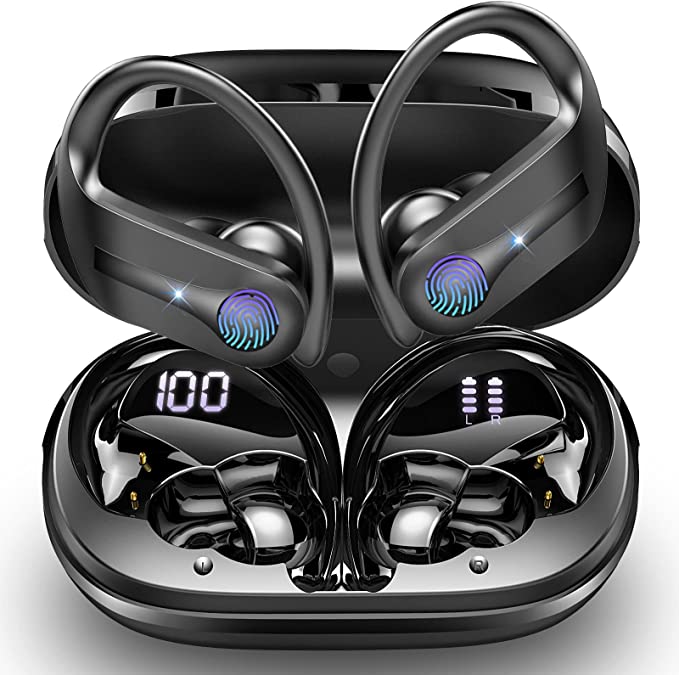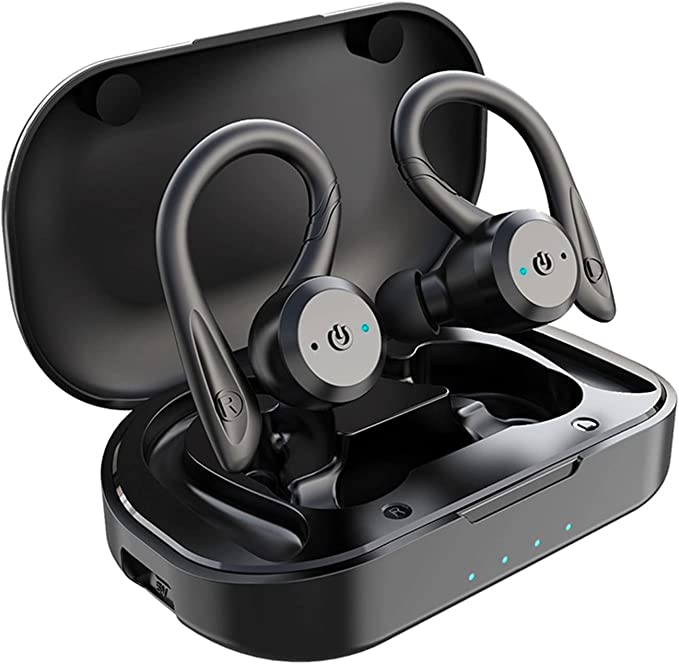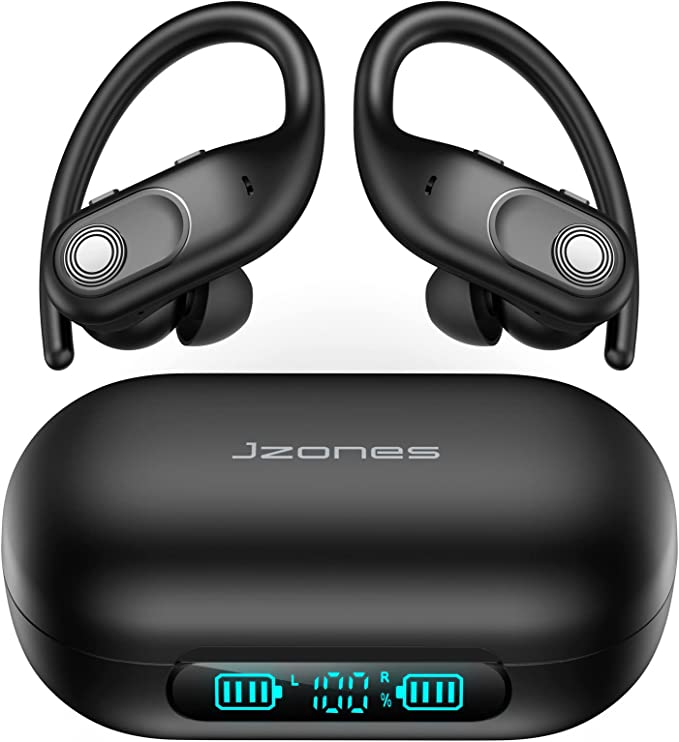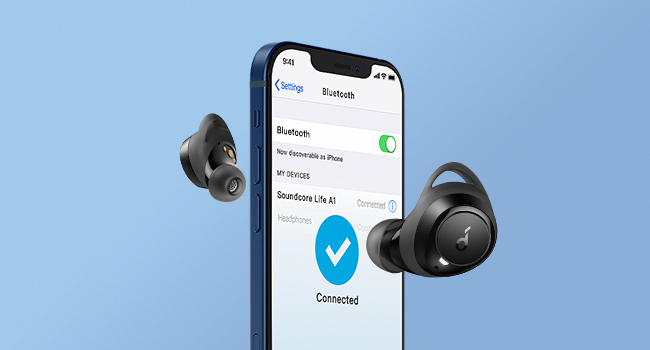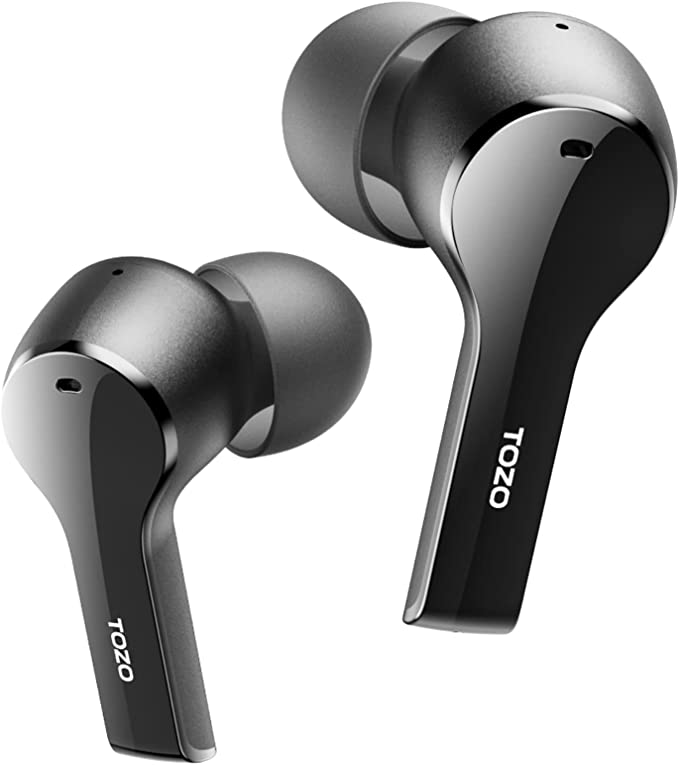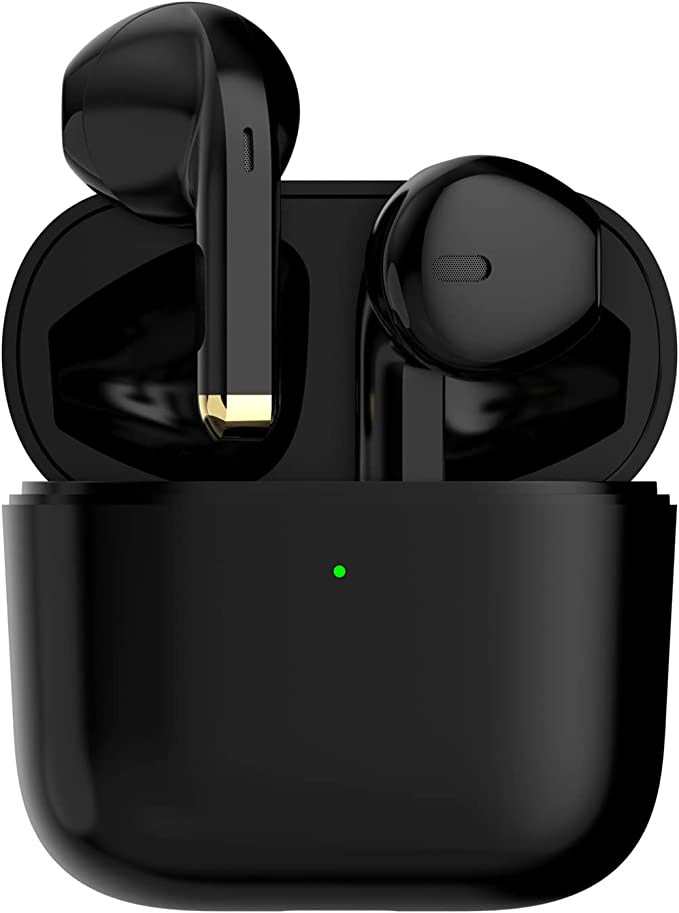Senso ActivBuds S255B wireless earbuds: Budget-Friendly Sports Earbuds with Killer Battery Life
Update on June 30, 2025, 8:42 a.m.
I remember jogging in the late ‘90s. The experience was an exercise in frustration, orchestrated by a portable CD player strapped to my arm. Each stride was a gamble against the anti-skip buffer, and the headphone cord—a constant, nagging tyrant—would snag on my shirt, yanking an earbud out at the perfect crescendo of a guitar solo. A sudden drizzle meant game over. We craved musical freedom during our workouts, but we were tethered by wires and weather.
Today, we can grab a pair of wireless earbuds like the Senso ActivBuds S255B for about the price of two movie tickets and enjoy a freedom that once seemed like science fiction. But how is that possible? The answer isn’t magic; it’s a fascinating story of mature science, clever engineering, and the art of the perfect compromise.

Freedom from the Elements: The Unseen Shield of IPX7
For years, terms like “water-resistant” were tossed around by marketers with reckless abandon. They were vague, subjective, and offered no real guarantee. To bring order to this chaos, a group of meticulous engineers at the International Electrotechnical Commission (IEC) established the Ingress Protection Code, or IP rating. It’s a universal standard that tells you exactly how tough a device’s enclosure is.
The ActivBuds S255B boast an IPX7 rating. Let’s decode that. The ‘X’ simply means they haven’t been rated for dust protection—a common omission for devices focused on moisture. The ‘7’ is where the real story is. According to the IEC 60529 standard, a ‘7’ rating means the device can be fully submerged in up to one meter of fresh water for 30 minutes without damage.
Think about that. This isn’t just about surviving sweat. It’s a scientifically verified guarantee that these earbuds can handle a torrential downpour, an accidental drop in a sink, or the most intense, sweat-drenched workout you can muster. This isn’t a marketing claim; it’s a promise backed by a globally recognized engineering standard, giving you the confidence to push your limits, whatever the weather.

The Steady, Invisible Leash: Appreciating Bluetooth 4.1
The next layer of freedom is cutting the cord. These earbuds use Bluetooth 4.1, a standard that might seem dated to tech spec obsessives. But to understand its inclusion here is to understand brilliant engineering. Released back in 2013, Bluetooth 4.1 was revolutionary for one key reason: it perfected the Bluetooth Low Energy (BLE) protocol. This allowed tiny devices to communicate reliably for hours on end without draining a miniature battery.
It hit a technical sweet spot. For a device like this, moving to a newer Bluetooth version would offer diminishing returns while increasing the cost of the internal chipset. Bluetooth 4.1, powered by a reliable CSR chip (a long-time leader in Bluetooth technology), provides a rock-solid connection for up to 30 feet and is efficient enough to squeeze an impressive 8 hours of playback from a tiny 85mAh lithium-polymer battery. It’s the definition of “if it ain’t broke, don’t fix it”—a pragmatic choice that delivers the performance you need without the price tag you don’t.

A Cone of Silence… For the Person on the Other End
Herein lies one of the most misunderstood terms in audio tech: “Noise Suppression.” The ActivBuds S255B feature CVC 6.0 Noise Suppression Technology. Your brain might jump to Active Noise Cancellation (ANC), the fancy feature in expensive headphones that erases the world around you. But that’s not what this is.
CVC, or Clear Voice Capture, is a clever software algorithm that works on your microphone’s input, not the sound you hear. Think of it this way: it creates a cone of silence for the person on the other end of your phone call. It listens for your voice and digitally filters out the constant, droning background noises around you—the hum of the treadmill, the clanking of weights, the whoosh of the wind. It ensures that when you take a call mid-run, you sound clear and professional, not like you’re in a hurricane. It’s a beautifully practical feature that focuses on making the headphones genuinely useful for communication in the real world.

The Art of the Trade-Off: Sound, Stability, and the $22 Question
So, they’re tough and they connect reliably. But how do they sound? The secret to decent audio in any in-ear headphone, regardless of price, comes down to one thing: the physical seal. The “deep bass and crystal clear treble” promised in the product description are entirely dependent on it. Bass frequencies have long sound waves that need a sealed chamber—your ear canal—to build pressure and be properly perceived by your eardrum. If the seal is poor, that bass “leaks” out, and the sound becomes thin and tinny. The included variety of gel flex silicone earbuds and the stability provided by the over-ear hooks are not just for comfort; they are critical components for achieving the stated sound quality.
This brings us to the final, most important piece of the puzzle: the price. A 4.0-star rating from over 2,500 reviews is telling. It shows a product that, for many, works exceptionally well. But the 11% of 1-star reviews, with recurring mentions of “stopped working” or issues with a “charging port,” also tell a story. This is the art of the trade-off.
To build a pair of IPX7-rated, 8-hour battery, wireless earbuds for under $25 requires compromise. Those compromises are likely in the microscopic tolerances of the charging port, the long-term durability of the internal solder joints, and the overall material quality. This isn’t a sign of a “bad” product; it’s a sign of a product engineered to a specific cost. The value proposition here is not a promise of eternal life, but one of exceptional performance for its price. It’s best viewed not as a permanent investment, but as a high-performance consumable.

The Quiet Triumph of ‘Good Enough’
These Senso earbuds are not a technological miracle. They are something far more impressive: a testament to the quiet triumph of “good enough” engineering. They represent the moment when once-premium technologies become so mature, so understood, and so affordable that they can be masterfully combined to solve 90% of a user’s problem for 10% of the premium price.
They are a celebration of technological democracy, freeing us from the tyranny of wires, the fear of weather, and the burden of a heavy price tag. And understanding the thoughtful science and deliberate compromises baked into their design makes us not just more informed, but also more appreciative consumers.


